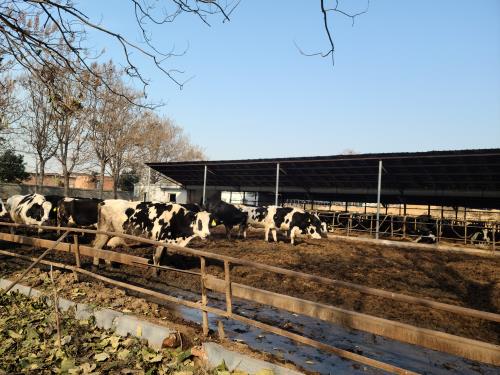Determining gestational age during pregnancy diagnosis is an important component of evaluating reproductive efficiency. In cattle, fetal measurements are commonly used for this purpose. However, obtaining these measurements can be time-consuming and difficult to visualize the fetus, especially in the later stages of pregnancy. One possible alternative method is to measure the size of the placenta. This may be feasible because the placenta is relatively easy to observe and measure using ultrasound from day 60 of pregnancy, and their size increases linearly until day 190 of pregnancy. Despite anecdotal evidence of the use of placenta, there have been no published studies evaluating their use in predicting gestational age.
Using a B-ultrasound machine to determine the gestational age of cows based on the size of their placenta
In cows, there is an exchange between the urinary sac membrane and the endometrium at a special contact point (i.e. placenta). The structure composed of maternal sarcomere and fetal cotyledons is an organ for breathing gases, transporting nutrients, and waste. The placenta can be first observed by ultrasound around the 35th day. The length of the placenta increases linearly during pregnancy. However, after 190 days of pregnancy, the rate of increase in placental length significantly slows down. There was no significant difference in placental length between 190 and 280 days of pregnancy.
What is the relationship between the length, vertical length, and area of the placenta measured by ultrasound scanning of cows and gestational weeks?
What independent factors (variety, age, farm or cow horn) have a significant impact on placental length and vertical length measured by ultrasound scanning?
To what extent can placental features measured by ultrasound scanning be used to predict gestational age.
Transrectal scanning of cows using a 7.5 MHz linear probe ultrasound machine. The cervix of a cow is used as a marker for placental scanning. Due to the different sizes of the placenta in different parts of the uterus, the largest placenta is located in the uterine body, so it is important to use placenta from the same part of the uterus for standardized research. The placenta was chosen to be one probe length away from the cervical head, as these were easily found after multiple scans over time in the same animal. This is because after 4 or 5 months of pregnancy, the placenta in the middle of the uterine horn will sink into the abdomen and cannot reach the uterine body anymore.
link: https://www.bxlimage.com/nw/435.html
tags: B-ultrasound machine ultrasound machine








